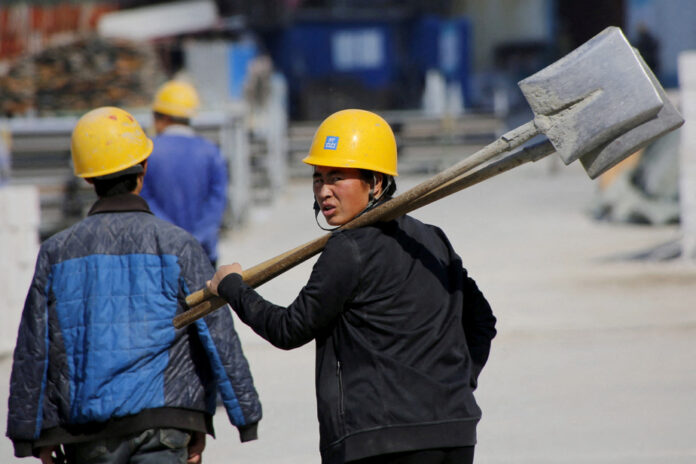(Beijing) China’s recovery is being thwarted by “new challenges”, Chinese leaders admitted Monday in Beijing, as the world’s second-largest economy faces slowing growth and record youth unemployment.
China unveiled last Monday a growth figure for the second quarter (6.3% over one year), much lower than analysts’ expectations.
This pace, which would be the envy of most major economies, is misleading, however, as the comparison is made with the same period a year earlier.
However, in the second quarter of 2022, growth had been heavily penalized by the confinement of the economic capital Shanghai.
From one quarter to another, a more realistic basis for comparison, the growth of the Asian giant increased by only 0.8% over the April-June period, weakened by sluggish consumption, a real estate sector in crisis and the specter of deflation.
After these disappointing quarterly figures, Chinese officials, including President Xi Jinping, provided an update on the economic situation on Monday.
It was pointed out “at the meeting that the current functioning of the economy is facing new difficulties and new challenges”, state broadcaster CCTV reported, referring in particular to weak domestic demand.
The minutes of the meeting also described an unspecified “significant number of risks”, “concealed dangers in key areas” as well as a “complex and difficult external environment”, amid geopolitical tensions with the United States and the war in Ukraine.
The meeting does not lead to “no major announcement”, notes analyst Julian Evans-Pritchard, of the firm Capital Economics, while many economists are pleading for a vast recovery plan.
But the tone reflects the “concern” of power, which still welcomed in April a “better than expected” recovery, recalls Mr. Evans-Pritchard.
Last month, China’s unemployment rate among 16-24 year olds hit a new high at 21.3%, according to official figures that only take into account the situation in major cities.
Every year, Chinese leaders traditionally meet at the end of July to analyze the country’s economic situation.
Chinese President Xi Jinping then convenes the Political Bureau, the decision-making body of the Chinese Communist Party (CCP) which includes, including him, the 24 most important political figures in the country.
China is targeting around 5% growth this year, a pace that would be one of the weakest for the Asian giant in decades.
But this goal could however be difficult to achieve, Chinese Premier Li Qiang warned a few months ago.
The official figure for growth in China, eminently political and subject to caution, is nevertheless still closely scrutinized given the weight of the second largest economy in the world.
To stimulate activity, China has multiplied announcements in recent days and displayed its support for the private sector, by far the largest pool of jobs in the country.
Incentives for the purchase of new vehicles were unveiled on Friday.
The automotive sector, which supports an army of employees and contractors in China, was one of the engines of economic recovery in 2021 after the first epidemic wave of COVID-19.
Other measures have also been announced to encourage the purchase of electronic products, of which China is one of the main manufacturers, or to attract private investment.
The second largest economy in the world is also weakened by a major real estate crisis.
Chinese leaders pledged on Monday to “optimize and adjust policies” related to the sector.
Real estate, a pillar of Chinese growth, is gripped by a crisis of confidence, which deters the Chinese from acquiring property at a time when many developers are in a precarious financial situation.
Real estate prices have soared in recent decades, but the indebtedness of developers has reached such levels that the authorities have decided to put a stop to it from 2020.
Since then, their access to credit has been considerably reduced and many groups are now struggling to survive.





